EAST BAY & BERKELEY NEIGHBORHOODS
Berkeley is a very diverse community, and the neighborhoods of Berkeley are equally diverse. Unlike other cities, the wonderful array of architectural styles is spread throughout the city. We always tell our clients that until you open the door, and step into a house, you simply can’t tell what you might find. You might find a jaw-dropping view, a secret garden, an impeccable arts and craft interior, or a simple California Bungalow with a fabulous “Berkeley-style” gourmet kitchen. You might also be mesmerized by a cool version of a mid-century modern house with an alluring sense of open space and economy of design.

Berkeley Hills
When we take new clients on tours of the Berkeley neighborhoods, many clients are so surprised by the beauty of the Berkeley Hills. “It’s so green!” they exclaim.
When we take new clients on tours of the Berkeley neighborhoods, many clients are so surprised by the beauty of the Berkeley Hills. “It’s so green!” they exclaim. There are wide tree-lined streets, as well as tiny paths made for only one car. There are houses on the sides of steep cliffs or on the side of Tilden Regional Parks, there are houses behind houses, and there are houses hidden behind stone, brick, wood, or steel fences. There are several very unusual parks to see, including Indian Rock, John Hinkle Park, Codornices Park, the Berkeley Rose Garden, and the incomparable Tilden Regional Park.
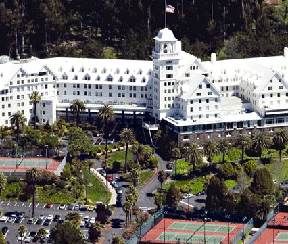
Claremont
In the years following the 1906 San Francisco earthquake, the real estate firm of Mason McDuffie built some impressive neighborhoods, and we think that the Claremont neighborhood is a stunning example of a great planned neighborhood. After a few twist and turns you will come to the newer part of the Claremont Hills—the areas rebuilt after the 1991 Firestorm.
After the San Francisco earthquake of 1906, many people left San Francisco for the East Bay. In the years following the quake, the real estate firm of Mason McDuffie built some impressive neighborhoods, and we think that the Claremont neighborhood is a stunning example of a great planned neighborhood. The houses here are stately, the lots seem larger than other parts of Berkeley, and the settings are lush and regal. The houses in the Claremont Court area of the Claremont are simply spectacular, each different, each appealing in a different way. Many of these grand houses have a grand pedigree, from famous architect such as Julia Morgan, William Worsted, and Walter Radcliff. The centerpiece of the Claremont neighborhood is the Claremont Hotel. This lovely, all white hotel holds court above Berkeley. It currently features a hotel, spa, and a members only/hotel guests athletic club. The hotel was built in 1915 on 22 acres of prime property. Inside the hotel are a series of wonderful historic photos of the hotel, and the Sunday Brunch service is an absolute delight.
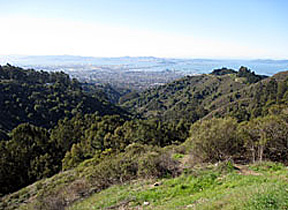
Claremont Hills
In the years following the 1906 San Francisco earthquake, the real estate firm of Mason McDuffie built some impressive neighborhoods, and we think that the Claremont neighborhood is a stunning example of a great planned neighborhood. After a few twist and turns you will come to the newer part of the Claremont Hills—the areas rebuilt after the 1991 Firestorm.
Some of the real estate industry refers to the Claremont Hills as the “firestorm area”. After the tragic firestorm in 1991, many of the upper portions of the Claremont hills were rebuilt. From the two tunnel road entrances, Bridge Way and Alvarado Road, the drive to the top of the Claremont hills takes many twists and turns. The older original houses in this neighborhood are grand, and the yards are beautifully maintained. Many of these homes have lovely views. After a few twist and turns you will come to the newer part of the Claremont Hills—the rebuilt areas. There are a myriad of new kinds of architecture here, both traditional and modern design. Many houses have beautiful outlooks of the Claremont Canyon open space, and some have lovely South Bay views. One house on Tunnel Road was built to resemble a saxophone. The houses seem much bigger here, and they are! Behind the Claremont Hills is Hiller Highlands, a luxury condominium community, which is built around a community center. These modern condos have wonderful views, as if you were sitting at the edge of the universe.
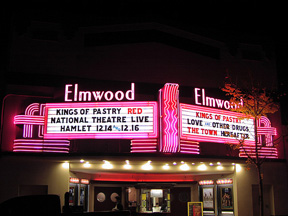
Elmwood
When we think of the Elmwood neighborhood, we picture two story brown shingled houses framed by bouquets of wisteria.
College Avenue is the main street for this lively neighborhood, and offers many different kinds of shops and services. Enjoy an exotic Middle Eastern lunch or dinner at La Mediterranee, or treat yourself to some heart Lobster risotto at the Trattoria Siciliano. If you like falafel, try the Holy Land, they serve one of the best falafels in the Bay Area. For any ice cream fan, a stop at the eclectic ICI is quite an experience. Try Jeremy’s if you are looking for a signature piece of clothing. Looking for authentic American Indian jewelry? Try Bill’s Trading Post. When my girls were small, we always spent a few moments admiring the exotic birds @ Your Basic Bird. And a trip to College Avenue is not the same without a stop at Sweet Dreams, a wonderful toy and candy store.
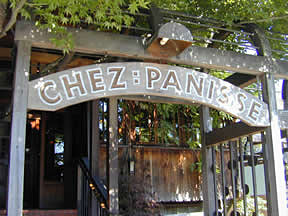
Gourmet Ghetto
This neighborhood is one of our most requested neighborhoods because it provides a very European lifestyle. One of the things we appreciate the most about the gourmet ghetto is the opportunity to people watch. Someone once told us that the mantra of the gourmet ghetto should be “Come for the food, stay for the show!”
This neighborhood is one of our most requested neighborhoods because it provides a very European lifestyle. In the span of a few blocks you can buy exquisite French style pastries at Masse’s, fresh baked bread and pizza at the Cheeseboard, Spanish and North African style tapas at Taste, authentic Jewish deli specialties at Saul’s Cafe, and indulge yourself at our local Andronico’s gourmet grocery store. There are several cafes, each offering great coffee. (Many people don’t know that a Berkeley Icon named Peet was responsible for mentoring those boys who started Starbucks) This “ living in the street” lifestyle appeals to many clients who prefer walking to driving. Our local Metro, BART, is also very close to this dynamic neighborhood.

Northbrae and Westbrae
These twin neighborhoods, both nestled below The Alameda, are some of the most affordable neighborhoods in Berkeley.
These twin neighborhoods, both nestled below The Alameda, are some of the most affordable neighborhoods in Berkeley. There are plenty of wonderful California bungalows here, as well as some fabulous corner properties which have surprisingly good views of the San Francisco Bay. And, like the Gourmet Ghetto, Northbrae and Westbrae are about walking! Both neighborhoods are fairly close to the North Berkeley Bart, and have their share of express buses to San Francisco. The centerpiece of the Northbrae neighborhood is the Hopkins Commercial strip, which features several specialty stores. The Monterey Market is a fresh produce and fruit market reminiscent of a giant open market in another country. IN just one block, you can shop for fresh fish, fresh bakery goods, gourmet cheese, and stop for a delicious espresso at Café Roma. Also in Northbrae are public tennis courts, a public swimming pool, and the loveliest public library of all at the intersection of Hopkins and The Alameda. If you enjoy gardening, take an hour or two to wander through Berkeley Horticulture on McGee Avenue—it is a gardener’s dream. Westbrae’s central street is Gilman Avenue, which houses two of the best restaurants in Berkeley: the ultra cool and always satisfying LaLimes, and the sumptuous Vietnamese restaurant Mama Lam’s. The New Leaf Garden Gallery has a fabulous assortment of garden fountains. The centerpiece of Westbrae is the lovely street-to-street Cedar-Rose Park. It is a great place to picnic, or just let your kids run til they drop!
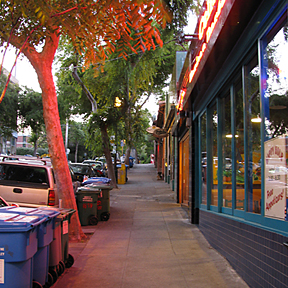
Northside
Northside is the Northern Border of the University of California at Berkeley campus. Northside’s main street is Euclid Avenue, which has a passel of small shops, mainly serving the needs of hungry students.
Northside is the Northern Border of the University of California at Berkeley campus. Northside’s main street is Euclid Avenue, which has a passel of small shops, mainly serving the needs of hungry students. Here you can buy the best hot dog in the country at “Top Dog” or contemplate the world while drinking a Greek coffee at Café Nefeli.

Panoramic Hill
Panoramic Hill lives up to its name. The views are panoramic. This neighborhood is built high above the University of California’s football stadium and backs up to open space.
Panoramic Hill lives up to its name. The views are panoramic. This neighborhood is built high above the University of California’s football stadium and backs up to open space. If you like to hike and wander, this may be the neighborhood for you. And if you don’t want to take the hairpin curves down the hill, there is an intricate system of paths which shortcut your trip down the hill.
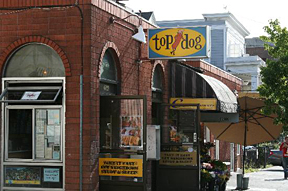
Southside/South Campus
The neighborhoods of South Campus are very dense; there are lots of apartment buildings and multi-unit residential units here. The centerpiece of the neighborhood is clearly Telegraph Avenue, a legendary Berkeley Avenue.
The neighborhoods of South Campus are very dense; there are lots of apartment buildings and multi-unit residential units here. The centerpiece of the neighborhood is clearly Telegraph Avenue, a legendary Berkeley Avenue. If you ask anyone about Berkeley, chances are they know something about Telegraph Avenue. These neighborhoods cater to student housing, and probably have the majority of apartment and multi-unit buildings, as well as some very large rooming houses. There are also some of the prettiest vintage duplexes and triplexes in this neighborhood. (For a list of historic landmarks in the City of Berkeley, please go towww.berkeleyheritage.com or try the City of Berkeley website. Southside has its share of cheap eats, great coffee shops, and the iconic organic grocery market. Whole Foods. At the intersection of Oregon and Shattuck Avenue, don’t miss the Berkeley Bowl. If you like to cook, and need special ingredients, this is the place. The Berkeley Bowl prides itself on offering the freshest fruits, vegetables, fish and meat. It’s fun to try a new breed of apple, grape or squash. Southside also has a fabulous bakery, Crixa. The ginger cakes as well as the coconut cakes from Crixa are really something special. This neighborhood is not far from the Berkeley BART station. Here is an interesting bit of trivia about BART (Bay Area Rapid Transit): why did it take so many years to complete BART in the Berkeley area? Well, besides the problems of imminent domain, the City of Berkeley absolutely demanded that all BART tracks be undergrounded. In spite of protests from other cities around this issue, the City of Berkeley was successful in this demand. You don’t see many above ground BART tracks in Berkeley, but you do see BART tracks in Oakland, San Francisco, El Cerrito and Albany.
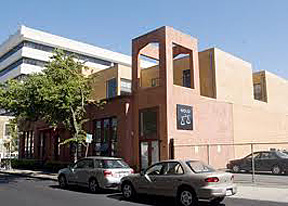
West Berkeley
When the idea of a shopping corridor on 4th Street was proposed, many people laughed at the idea. Today, many years later 4th Street has become a Mecca for shoppers.
In sharp contrast to the well know anti-war demonstrations of the 1960’s, the City of Berkeley played an integral role in the Bay Area’s ship building career. At the zenith of the Liberty shipbuilding era, a company called “Berkeley Pump” made a majority of the pump apparatus parts. There were no fewer than 14 separate warehouses manufacturing and assembling these pumps. An old time real estate agent once told me that all the warehouses in West Berkeley which have the “glass block” design were all former Berkeley Pump properties.
